26+ Sample Joint Agreements
-
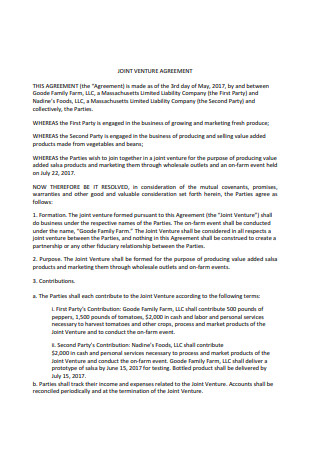
Joint Venture Agreement
download now -
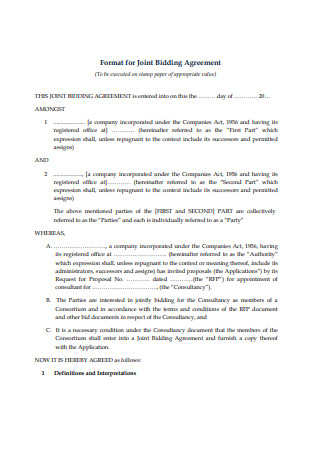
Joint Bidding Agreement
download now -
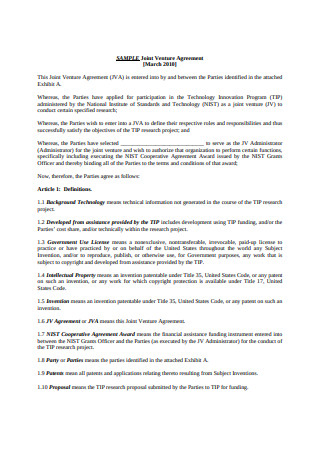
Sample Joint Venture Agreement
download now -

Joint Project Agreement
download now -
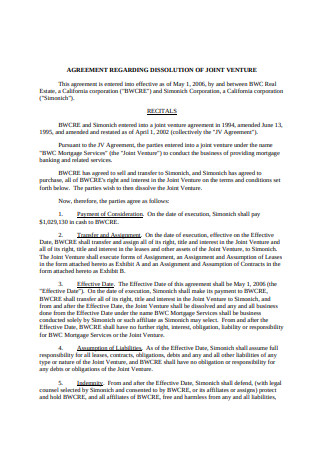
Joint Venture Agreement Sample
download now -

Joint Agreement Form
download now -
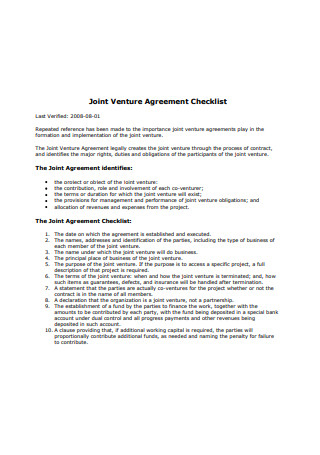
Joint Venture Agreement Checklist
download now -

Joint Development Agreement
download now -

Joint Agreement Participation Authorization Form
download now -

Joint Venture Agreement Example
download now -

Joint Corridor Cooperation Agreement
download now -

Sample Joint Venture Agreement Format
download now -

Joint Venture Agreement Form
download now -

Joint Collaboration Agreement Format
download now -
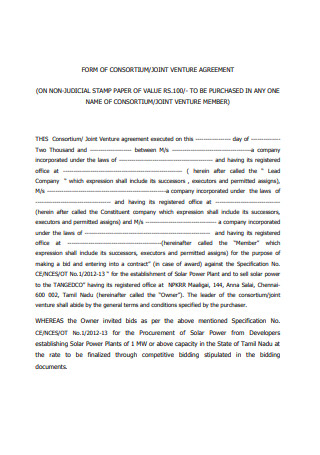
Standard Joint Venture Agreement Form
download now -

Joint Check Agreement
download now -

Basic Joint Venture Agreement
download now -

Joint and Several Residential Lease Agreement
download now -

Joint Tenancy Agreement
download now -
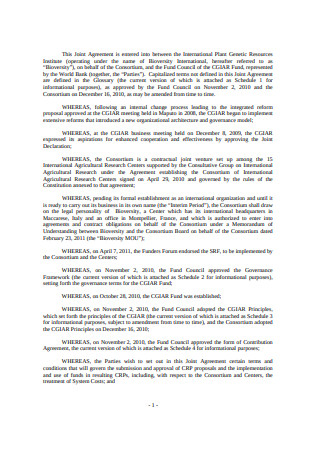
Joint Agreement Example
download now -

Sample Joint Venture Agreement Checklist
download now -
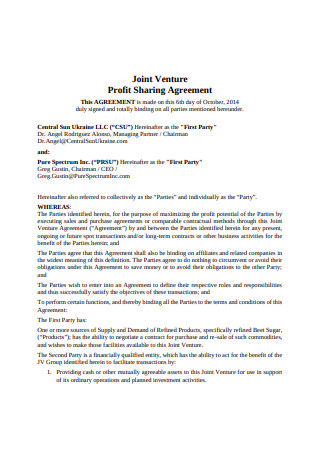
Joint Venture Profit Sharing Agreement
download now -
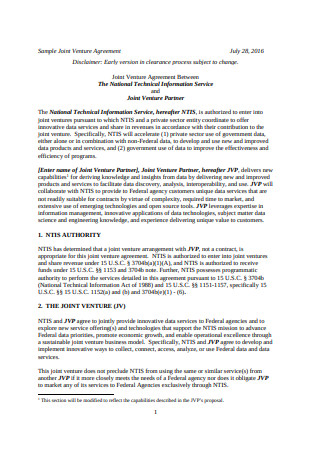
Sample Joint Venture Agreement Example
download now -

Joint Providership Agreement
download now -

Basic Joint Venture Agreement Example
download now -
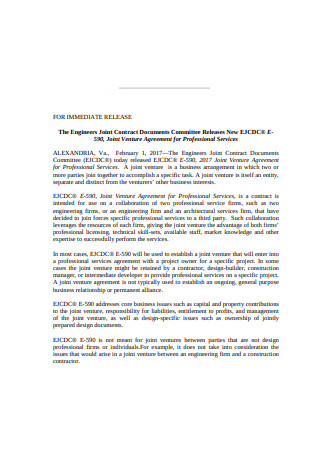
Professional Joint Venture Agreement
download now -
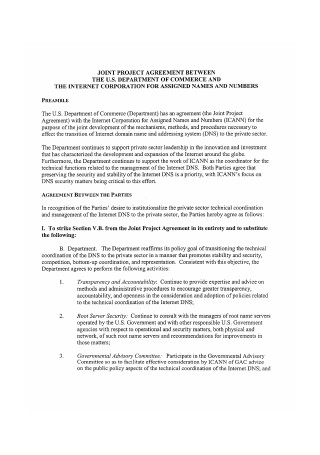
Joint Project Agreement Sample
download now -
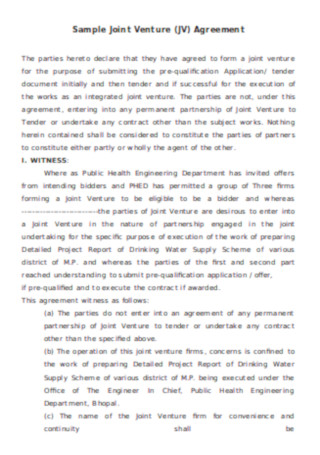
Sample Jiont Venture Agreement Example
download now -

Joint Transport Agreement Template
download now
FREE Joint Agreement s to Download
26+ Sample Joint Agreements
What is a Joint Agreement?
Different Classifications of Joint Ventures
How to Begin a Joint Venture in 3 Steps
FAQs
What are the three common reasons why companies choose joint ventures?
What should a joint venture agreement contain?
How do joint ventures pay taxes?
How does a joint venture differ from a partnership and a consortium?
What are limited liability companies?
What is a Joint Agreement?
A joint agreement is a written contract between two individuals who agree to fulfill a business promise. Also, a joint agreement can be an arrangement between two parties, where both parties agree to be accountable for performing specific duties and responsibilities. One example of a joint contract is a lease agreement. For example, Hannah and Kaye are housemates, and they agree to sign a written agreement with a landlord stating that they will pay $1500 every month for their stay. If Hannah doesn’t pay her $750 share, the landlord can hold both Hannah and Kaye accountable for not paying for their rent.
Another example of a joint agreement is a joint venture agreement, which will be our focus in this article. A joint venture contract is an agreement where two entities agree to operate on a business project together. In this type of deal, two companies act and function as one to accomplish the objectives of the contract. Typically, the document will record the duties and obligations of both parties to accomplish the project.
Different Classifications of Joint Ventures
A joint venture happens when two different companies work together to become more successful in their business plans. They share their resources, skills, efforts, and profits to meet their expectations and demands under an agreement. There are different classifications of joint ventures and here are some.
How to Begin a Joint Venture in 3 Steps
One of the many reasons why businesses agree to be part of a joint agreement is to gain more marketing power. Compared to a partnership agreement, every company under a joint venture remains independent and only consents to work partly with another company to reach a common marketing goal. According to Forbes, a survey conducted by the Bain & Company showed the growth of joint venture deals by 20% yearly from the years 1995 to 2015. Also, Forbes surveyed about 253 companies under joint ventures, and at least 80% of their participants met their expectations in their ventures. To begin your joint venture journey, you should follow the steps below.
Step 1: Look for a Partner
Before searching for a partner, have a list of business objectives in mind so you’ll know who to look for. You must find a partner that will help you reach your goals. Maybe you’ve made a new invention but you don’t have enough resources to reach your target market. For that reason, you need to search for an establishment with a powerful market presence and jointly advertise, distribute, and trade your product. For your partnership to be a successful venture, you will have to work together without any issues. You have to know the other company’s business values and answer the following questions: Are they financially secure? Will they share the same level of dedication? Will their company culture work with ours? What kind of attitude do they have towards collaboration? What is their management team like? How is the performance of the company overall? You have to establish trust with your partner so you could work together without setbacks.
Step 2: Choose What Type of Joint Venture You Want Yourself to Get Involved In
You can have a joint venture agreement with another company in two simple ways. One way is to create a new and separate institution for your joint venture, where you and the other party owns the newly created business entity. For example, you and your partner can form a new limited liability company, partnership, or corporation, which will be the means for the business venture to operate. The other way is to set up a joint venture under a contract, which will cost you less capital. If your business venture is small, then creating a new entity may not be practical. However, if you want to ensure that you’re protected from liability then it is better to continue by establishing a new LLC or corporation.
Step 3: Construct Your Joint Venture Contract
The last step is to construct your joint venture contract. You can begin by making a letter of intent or a term sheet. An LOI is a summary of the key provisions that you and your partner have agreed on, while a term sheet is a file that lays out the conditions and terms relating to your business transactions. Compared to a term sheet, an LOI is more legally binding. Only then, you can create your joint venture contract. The agreement should address how gains and losses are to be distributed, what the contributions of each party are, how will the organizational structure look like, what are the terms for termination, etc.

FAQs
What are the three common reasons why companies choose joint ventures?
The three common reasons why companies enter into joint venture agreements are the following: (1) Combined resources. One benefit of entering into a joint venture is the combined resources of two companies to realize their venture goals. One company may have a good manufacturing procedure, while the other may have a lot of distribution networks. (2) Lesser cost. As mentioned earlier, two companies may purchase large quantities of goods for a low price, and they may also share a commonplace to stock their inventory with one shared staff to oversee the inventory. (3) Mixed expertise. Each party involved in a joint venture may have different backgrounds, skills, and expertise. One party may be able to supplement what is lacking in the other party’s expertise, and the same is true vice versa.
What should a joint venture agreement contain?
A standard joint venture agreement should contain the following: parties involved, terms for ownership, the share of interest, a list of resources, the workers involved, administrative documents, and financial statements.
How do joint ventures pay taxes?
The most common way to put up a joint venture is to create a separate entity for the business venture. In that case, both parties will own a portion or a percentage of the company. For example, a joint venture that is a corporation can have equal shares of company stock and members of the board. Moreover, if the business venture is a separate organization, it will pay its taxes as an LLC, a corporation, or a partnership.
How does a joint venture differ from a partnership and a consortium?
A joint venture may be somewhat similar to a partnership, but it also has its differences. A company that is created by two or more individuals is called a partnership. On the other hand, a joint venture is a business structure where two or more business organizations form a new company. When we talk about a consortium, it is a term used to describe a joint venture. It is a looser type of agreement where several business organizations work together for a common goal. Note that consortiums are commonly formed in non-profit organizations.
What are limited liability companies?
Limited liability companies are companies in the United States with a combined corporate structure of a corporation and a sole proprietorship or partnership. From the term “limited liability”, the owners of this type of company are not liable for any corporate debts. This type of business structure is only permitted under state regulations, and several states don’t limit ownership, which means that anyone can be a part of limited liability companies. The only exception though are insurance companies and banks. Compared to a corporation, an LLC is easier to establish as it provides more protection and flexibility.
Getting into a joint agreement has both its advantages and disadvantages, though we’ve only tackled on its benefits in this article. Companies who decide to enter into a joint agreement must seek to get the most from its benefits so they could provide better services and goods to their customers. In return for customer satisfaction, companies under a joint venture agreement will have more sales as a team.
